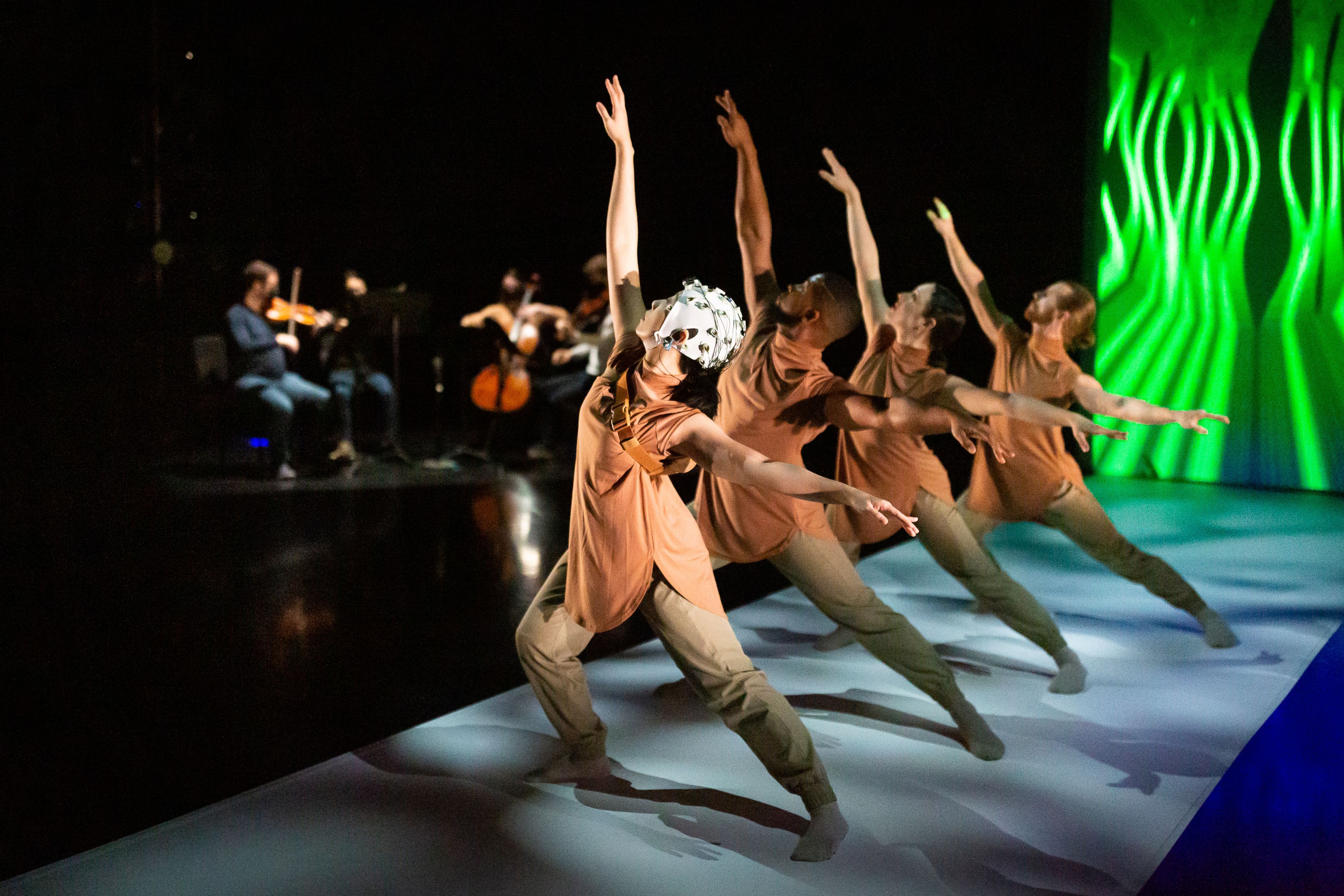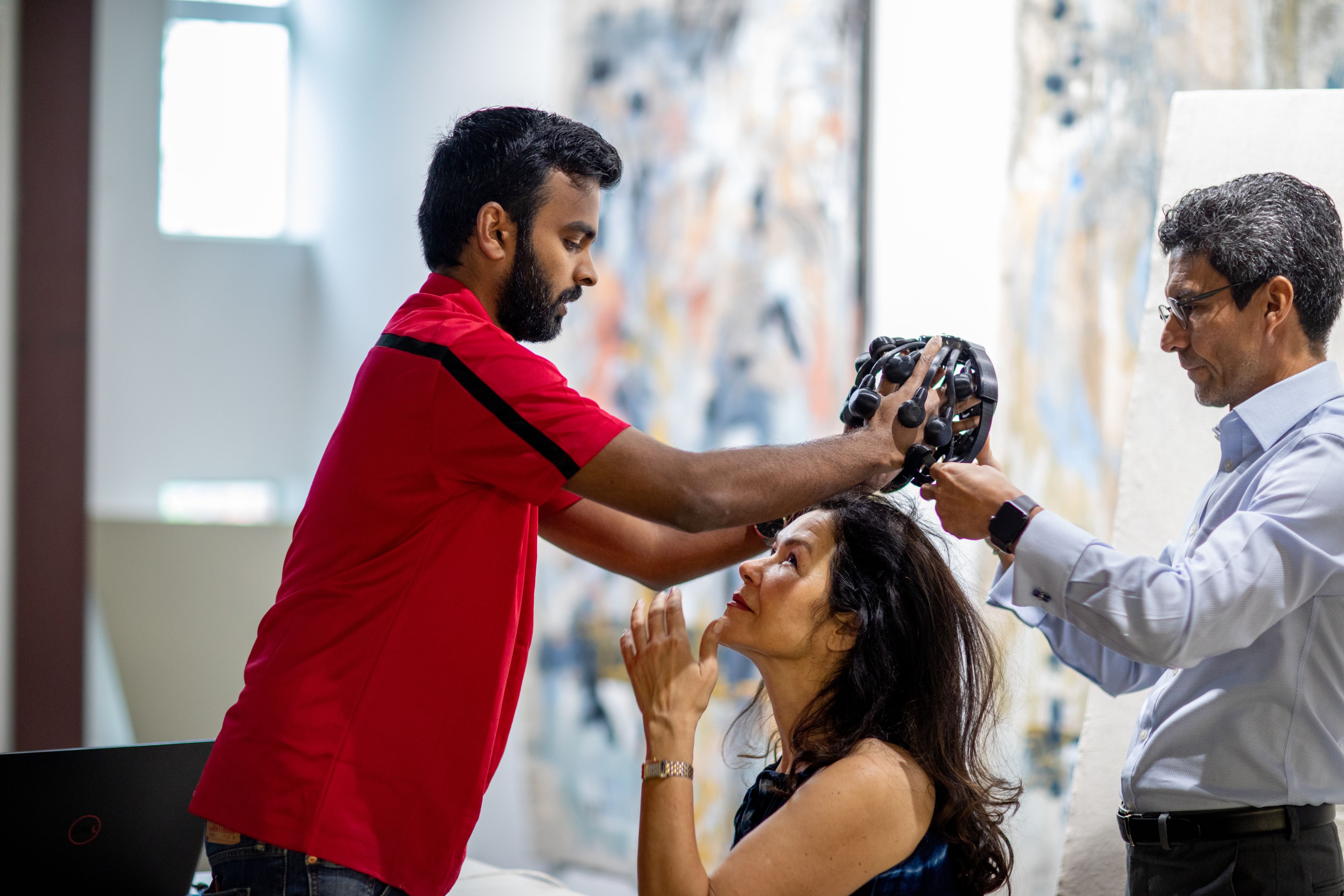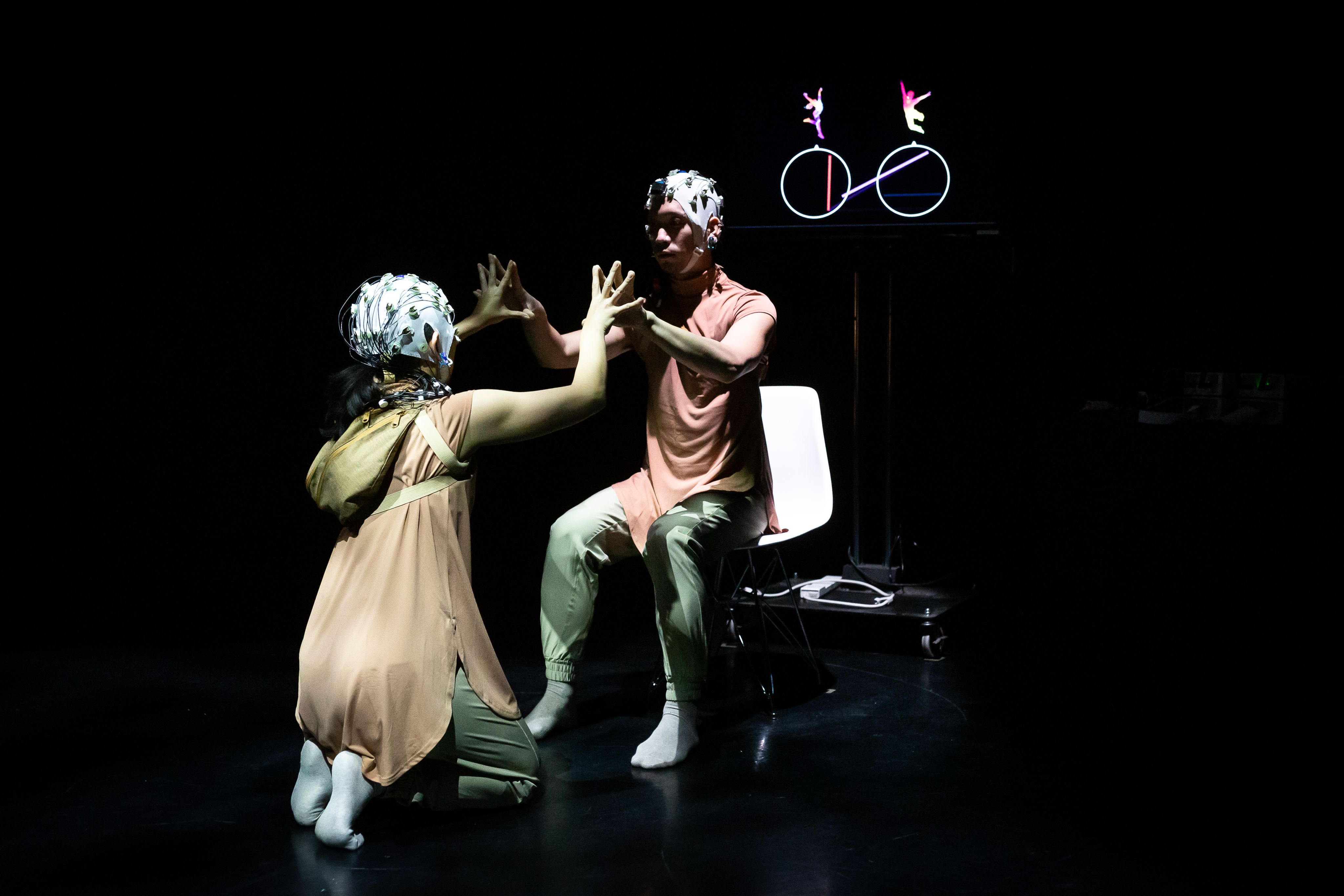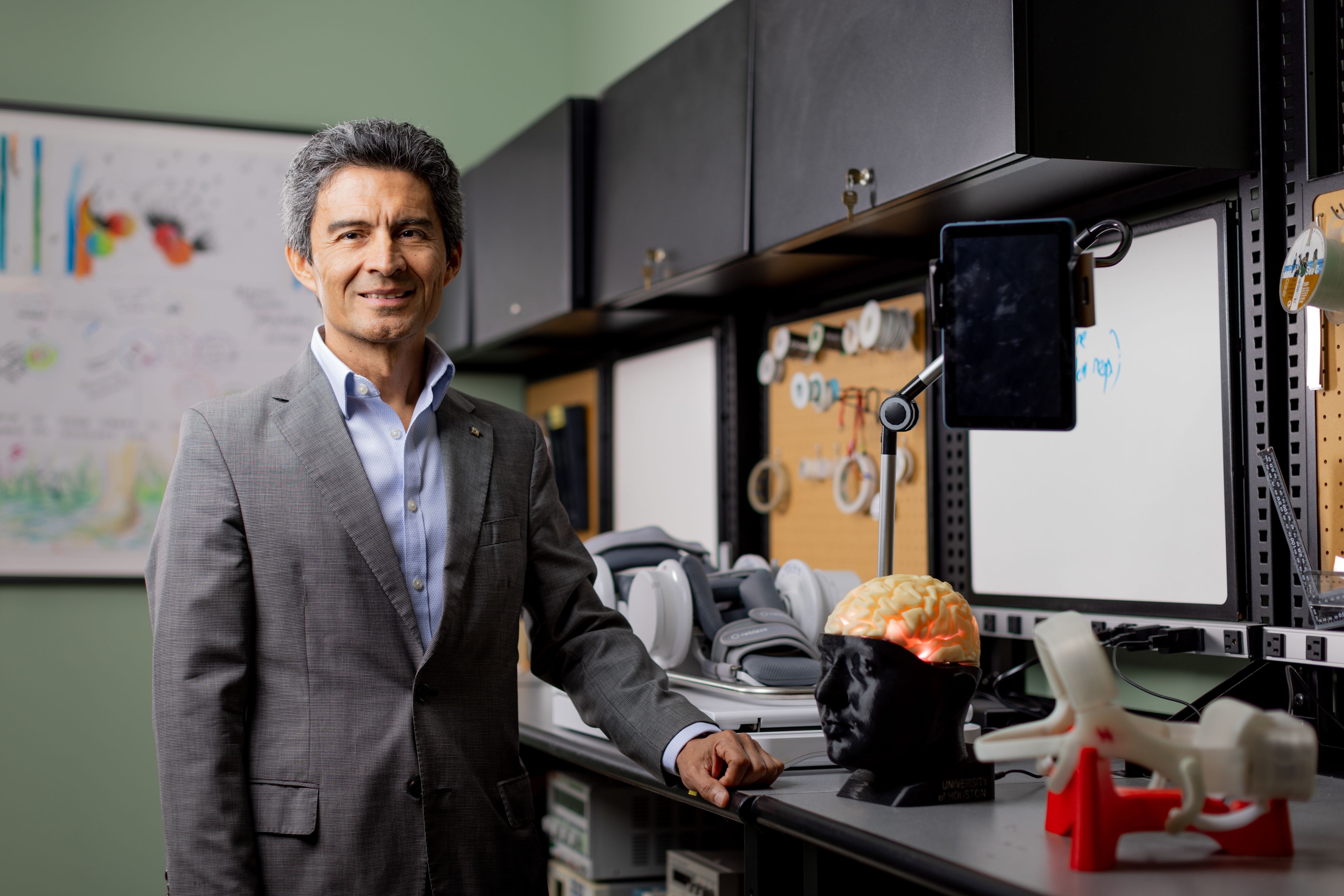Your Brain on Dance
UH research explores a world in which art can be prescribed as medicine.

How refreshing would it be to leave a doctor’s appointment with a prescription that would take you to an art museum or a dance class, instead of to a pharmacy? Doctors might one day prescribe “listening to Chopin” to a stroke survivor, “looking at impressionist paintings” to someone with autism, or “dancing a march” to a patient diagnosed with Parkinson’s. You could fill that script and still afford your fancy coffee, even take your partner or kids along for treatment.
In my research as a professor of electrical and computer engineering at the University of Houston and director of the BRAIN Center, I use technologically advanced devices to study what happens in the human brain when people engage in creative pursuits, like dance. The technology we use allows us to study the brain in a broad array of real-world settings, outside the confines of a lab.
Changing States
My work is interdisciplinary. I studied hard sciences — computational neuroscience and neuroengineering — and also have experience working with patients in clinical and behavioral settings. I’ve also studied flamenco dance. At the BRAIN Center, I work across disciplines to apply neuroengineering to help patients. My recent project “Your Brain on Dance” captured electrical activity in dancers’ brains while they performed and has led to new learning about how the arts can be used to treat diseases.
Through this work, I’m seeking to make possible a metric for prescribing art — a metric that is rigorous and based in neuroscience. If I get my wish, prescriptions for art will even be covered by insurance.

Neuroscientists agree that art, in any form, is a powerful neuromodulator. That means the act of creating art, or of simply enjoying it, changes our brain activity. Art alters how we feel and how we act. And it has existing therapeutic applications: Music therapy supports patients with Alzheimer’s and helps patients with Parkinson’s disease to keep moving through a freezing of gait (when one stops walking and cannot restart).
We know that we can use art to access different parts of the human brain and to change a person’s internal state. But as a community of scientists and researchers, we have yet to determine quantitative metrics to describe how specific experiences with art and creative expression affect different conditions. What I want to create is a brain-art map, or brain-creative expression map, indicating what parts of the brain respond to specific types of music or movement. With such a resource in hand, doctors could pinpoint the part of a patient’s brain that they want to activate and apply targeted art therapy to help that patient heal.
To create such a map, I am working with a diverse set of collaborators, including folks at UH and local dance companies. We are outfitting artists and performers with wearable electroencephalogram (EEG) devices while they engage in dance, expressive movement and other creative pursuits. The EEG technology allows us to see precisely what happens in the wearers’ brains in real time as they create art and movement.
Brain Waves
These specialized EEG devices don’t just make our research possible; we also employ them in the lab as assistive and rehabilitative tools for patients. Picture, for example, a patient with Parkinson’s who struggles to walk. In our lab, she dons a flexible cap with brain receptors and covers her legs with brain-directed, moveable sheaths (a neuro exoskeleton). We know what brain activity creates the motion of walking, so we can help the patient’s brain interact with the neuro exoskeleton to move her legs in a walking motion. Over time, this can lead to rehabilitation — i.e., the patient relearns to walk on her own, without help from the neuro exoskeleton.
“You yourself are an artist, because your brain creates a new version of any art you experience.”
But I know from my experience with dance and from working closely with patients that walking is more than locomotion: It’s a means of self-expression. Think of how you can identify a good friend’s mood by their walk as they approach you on the sidewalk. Our work at the intersection of rehabilitation and creative expression means that we will be able to help patients learn not just to walk again but to walk like themselves again, with movements specific to context and mood.

New Pathways
Earlier in my career, many researchers told me that it would be impossible to use EEG technology to study and recreate the brain activities behind specific body movements. It’s not; we’re doing it now in the lab. And it’s my goal to make these techniques and devices accessible and affordable so that patients everywhere can benefit.
Get this: You already can reap the benefits of our research findings in your own life. I encourage you to stimulate your brain through engagement with whatever art form you most enjoy. Beyond rehabilitation and treatment of specific conditions, music, dance and visual art generally promote wellness and keep our brains healthy. Even if you don’t think of yourself as a creative person, when you engage with the arts, you yourself act as an artist.
I’ll explain why: We capture information through our sensory organs (line, color and texture through the visual cortex; sound, speech and music through the auditory cortex). This information enters through the back and sides of the brain, typically, then travels toward the midline and to areas in the front of the brain where we integrate and analyze information. All told, we perceive what is happening around us, deconstruct it and then put it back together, weaving in our own memories and feelings.
When you look at a painting by Picasso, your brain deconstructs what you see, transfers that information to different parts of the brain and then puts it back together, incorporating extra information like what you know about Picasso, your past experience with the art and components of your emotional state at the time. In the end, you recreate Picasso’s painting to make meaning of it. You yourself are an artist, because your brain creates a new version of any art you experience.
But because the neural pathways that we use to piece sensory inputs back together can get rusty, I recommend that you visit a museum or attend a concert from time to time to keep your brain sharp.

José (Pepe) Luis Contreras-Vidal
José (Pepe) Luis Contreras-Vidal
José Luis Contreras-Vidal is a Hugh Roy and Lillie Cranz Cullen Distinguished Professor and the director of the BRAIN Center at the University of Houston.

